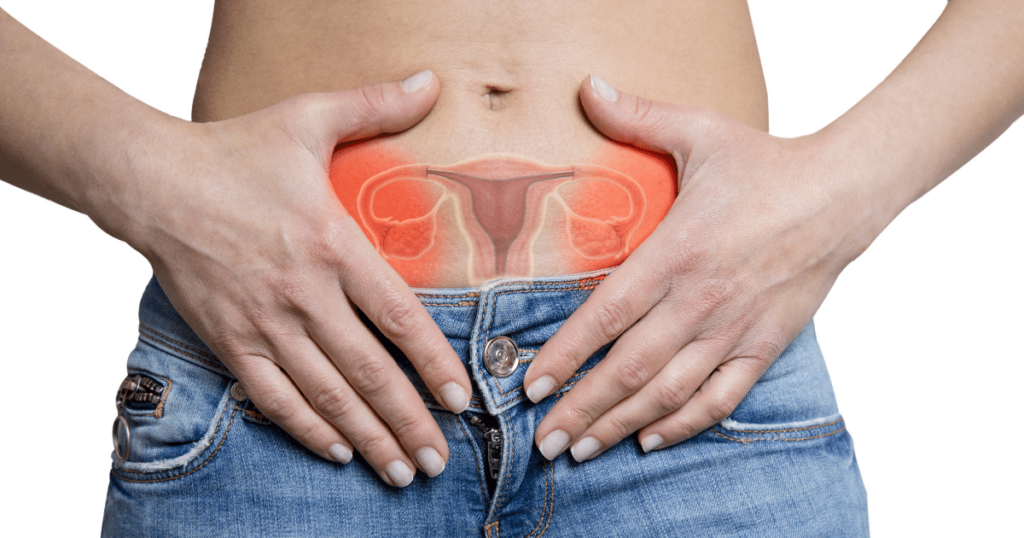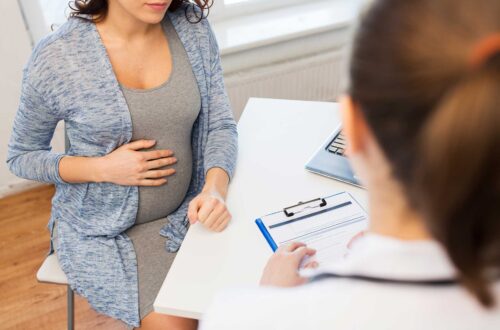
Reasons Why You Shouldn’t Ignore Ovulation Cramps
The reproductive process would not be complete without ovulation. Although some women may not experience any discomfort during ovulation, it can be quite excruciating for others.
Ovulation discomfort is a normal symptom and shouldn’t be ignored unless it’s accompanied by other symptoms that make you worried, especially persistent chronic pain. What you need to know is as follows.
Ovulation Pain: The Essentials
Pain during ovulation is usually mild and short-lived. On the day you think you might be ovulating; you can have pain on one side of your body for a few minutes or perhaps a couple of hours.
As a surge of luteinizing hormone (LH) travels through your system, a follicular cyst swells and eventually ruptures, releasing the egg.

The fallopian tube shortens after the egg is released, allowing it to more easily reach the sperm that are waiting to fertilize it. While this is happening, blood and other fluids from the damaged follicle may leak into the abdominal cavity and pelvis, causing irritation.
The pain might be intense or dull, or anything in between. Discharge, such as spotting, is a possible side effect. Please see a doctor if the pain persists or if it occurs at other times of your cycle.
Other Causes of Period Pain
It’s possible that the discomfort you’re feeling during your period is being caused by something than your period.
Take note of when and where the pain occurs, how long it lasts, and any other symptoms it may bring on. Keeping track of your symptoms can aid you and your doctor in identifying the source of the problem.
It’s best to see a doctor if your midcycle pain persists so that he or she can run diagnostics and prescribe appropriate medication.
Cysts
Ovarian cysts can induce a wide range of uncomfortable side effects, including but not limited to abdominal pain, nausea, and bloating. Cysts might vary in their ability to produce symptoms.

Other, less common cyst types that might cause discomfort include dermoid cysts, cystadenomas, and endometrial cysts.
Ovarian cysts, or polycystic ovarian syndrome (PCOS), are the defining feature of a separate disorder. Infertility can develop in women with PCOS if the condition is left untreated.
A CT scan, MRI, or ultrasound may be ordered by your doctor to help identify the sort of cyst you have. Cysts often disappear on their own without the need for treatment.
Cysts are usually harmless, but they might cause problems if they enlarge or are atypical.
Adhesions or Endometriosis
In the painful condition of endometriosis, tissue that looks like the uterine lining grows in places outside the uterus.
In response to your hormones, the lining tissue of your uterus can become inflamed and bleed or inflame the surrounding area. You may have increased discomfort during your period if you have scar tissue or endometriosis adhesions.
Similarly, prior surgical procedures increase your risk of developing intrauterine adhesions, also called Asherman syndrome. Cesarean section or dilation and curettage (D&C) are examples of such procedures.
These adhesions can also be the result of a previous uterine infection. It is also possible to develop Asherman syndrome for no apparent reason.
Your doctor may recommend a hysteroscopy or laparoscopy if he or she suspects one of these disorders, as they won’t show up on a standard ultrasound. These are operations that provide a clear view into the pelvic or uterine cavity for the clinician.
Disease Spread or the Emergence of STDs (STIs)
Does your discomfort coincide with a discharge that seems abnormal or smells bad? Are you running a fever? Does it hurt when you have to urinate?
These signs may indicate a serious bacterial illness or a sexually transmitted infection (STI) that requires immediate medical attention.
Infections can be caused by medical treatments, including childbirth. Even if you don’t have a urinary tract infection (UTI), you could be experiencing pelvic pain.
Condom use prevents the spread of sexually transmitted diseases such chlamydia, gonorrhea, and HPV.
Ectopic Pregnancy
Signs of an ectopic pregnancy include pain in only one side of the pelvis.
It’s a situation where an embryo implants somewhere other than the uterus, most commonly the fallopian tubes. There is a high mortality rate associated with ectopic pregnancies, and they are often identified by the eighth week.

You should consult a doctor right away if you have any suspicions that you could be pregnant. The rupture of the fallopian tube can be avoided with prompt medical attention and/or surgical removal of the pregnancy if it is discovered to be ectopic.
Managing Chronic Pain During Ovulation
If you’ve seen a doctor and they’ve ruled out anything serious, the pain you’re feeling is probably just regular ovulation discomfort. Please keep a close eye on your symptoms and report any changes to your doctor.
If you’re experiencing midcycle pain, try these strategies to relieve pain:
- Ibuprofen (Advil, Motrin, Midol) and naproxen are examples of OTC pain medicines you can try for pain relief.
- You can also discuss birth control with your doctor, if it’s a desire.
- You can use a heating pad on the region or simply soak in hot water.
If your ovulation pain doesn’t go away, it’s time to see a doctor.
Women between the ages of 21 and 29 are encouraged to get a Pap smear every three years in order to screen for cervical cancer, as recommended by the American College of Obstetricians and Gynecologists (ACOG).
Women between the ages of 30 and 65 should get a Pap smear every 3 years or a Pap smear plus an HPV test every 5 years, according to ACOG guidelines.
Cervical screening is not recommended for women over 65 unless they have a history of the following, according to ACOG guidelines:
All women of childbearing age should see a gynecologist once a year for a checkup and pelvic exam, as well as to discuss any other issues related to their reproductive health.
Annual checkups are advised, while a Pap smear may not be necessary every time. Call your doctor right away if you’ve been experiencing any pain or other symptoms and you haven’t already scheduled an appointment.
Summary
Midcycle cramps are a common symptom of ovulation for women who menstruate. Pelvic pain can also be caused by a number of different disorders, some of which can be quite serious if left untreated.
Always keep a close eye on your physical state and let your doctor know if you notice any changes.
Finally
For more information on chronic pain management, pain disorders, chronic pain resources, psychogenic pain, effective chronic pain treatment options or other physical therapy, you should book a consultation session with a specialist at Chronic Therapy today, to give you professional advice that will suit your personal experience.
Also, for people with chronic pain who are constantly worried on how to treat chronic pain or get their chronic pain treated, our specialist at Chronic Therapy have made huge success over the year in recommending reliable resources to manage chronic pain from nerve pain or any other developing chronic pain conditions.



